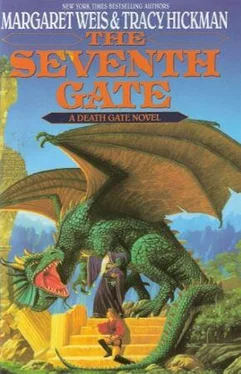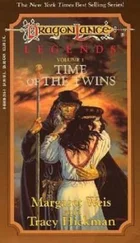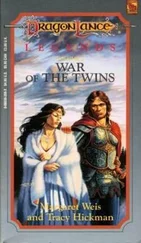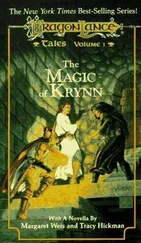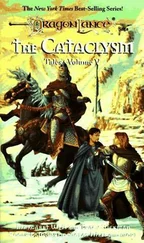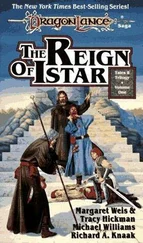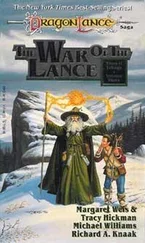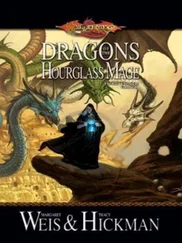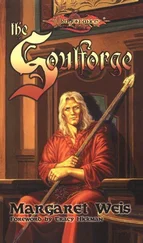Margaret Weis - The Seventh Gate
Здесь есть возможность читать онлайн «Margaret Weis - The Seventh Gate» весь текст электронной книги совершенно бесплатно (целиком полную версию без сокращений). В некоторых случаях можно слушать аудио, скачать через торрент в формате fb2 и присутствует краткое содержание. Жанр: Фэнтези, на английском языке. Описание произведения, (предисловие) а так же отзывы посетителей доступны на портале библиотеки ЛибКат.
- Название:The Seventh Gate
- Автор:
- Жанр:
- Год:неизвестен
- ISBN:нет данных
- Рейтинг книги:3 / 5. Голосов: 1
-
Избранное:Добавить в избранное
- Отзывы:
-
Ваша оценка:
- 60
- 1
- 2
- 3
- 4
- 5
The Seventh Gate: краткое содержание, описание и аннотация
Предлагаем к чтению аннотацию, описание, краткое содержание или предисловие (зависит от того, что написал сам автор книги «The Seventh Gate»). Если вы не нашли необходимую информацию о книге — напишите в комментариях, мы постараемся отыскать её.
The Seventh Gate — читать онлайн бесплатно полную книгу (весь текст) целиком
Ниже представлен текст книги, разбитый по страницам. Система сохранения места последней прочитанной страницы, позволяет с удобством читать онлайн бесплатно книгу «The Seventh Gate», без необходимости каждый раз заново искать на чём Вы остановились. Поставьте закладку, и сможете в любой момент перейти на страницу, на которой закончили чтение.
Интервал:
Закладка:
Patryn magic came closer to understanding in this regard than did that of the Sartan. While Sartan magic talked about looking, “concentrating on the Wave of possibilities,” the Patryns spoke in terms of an object’s “true name.” Patryn magic saw itself as a search for true name of a possibility and the calling of that name into reality. Naming an object completely was the ultimate objective of Patryn magic. [10] Elven Star , vol. 2 of The Death Gate Cycle , Appendix titled “I Runes and the Variability of Magic.” See text under heading “Rune Magic: Theory and Practice.”
While Sartan magic viewed this process in more nebulous terms, it is essentially this process of defining completely the probability required that was the essence of all magic.
The flaw in all our epochs of magical theory and practice came down to a single word: completely. The Patryns were first to understand the limits of their own rune structures through the insights of Sendric Klausten. [11] Ibid . See text under heading Grain of Magic and Variability.
Rune magic is constructed of runes within runes. Before Klausten it was believed that this succession could be infinite—rather like cutting an apple in half, then cutting the half in half, then cutting the half of the half in half, and so on an infinite number of times. Klausten, however, realized that there came a point in writing the definition where the presence of the rune itself affected the definition—and beyond which magic rune structures could not go.
The Sartan of Abarrach also discovered this limitation during their research into Necromancy. [12] Fire Sea , vol. 3 of The Death Gate Cycle , Appendix titled “Necromancy.” See text under heading Material as Coarse Existence Structure.
The limits of the runes they defined as the “Runestate Boundary” in necromantic writings. Other advanced research writings in Patryn magic talk about the “Barrier of Uncertainty,” beyond which runes are too coarse in structure to pass. Both of these terms speak to the same limits written of by the Patryn Klausten: the inability to define any magic beyond the grain of the runes themselves.
Both magicks attempted to come to grips with this Runestate Boundary or Barrier of Uncertainty, and how to pass beyond it in different ways and for different reasons.
Sage Rethis [13] Elven Star , vol. 2 of The Death Gate Cycle , Appendix titled “Patryn Runes and the Variability of Magic.”
established the laws of Patryn rune magic. While Patryn magic certainly existed before Rethis, his attempts at defining the magic itself became the touchstone for Patryn magical thought for many ages and included the writings of Klausten in their definition. His thoughts shaped Patryn approaches to the barrier from that moment on. His basic laws are:
First Law of Rethis: An object’s name has balance. For a Patryn rune to work—or that of a Sartan, for that matter—the rune structure must be balanced. A pillar whose base is not square with its sides will not stand upright. Nor will that pillar stand if one side is heavier than the other. So it is with rune structures.
The problem came when the “true name” of the object—the name that was fully balanced—extended past the Barrier of Uncertainty, where the rune structure could no longer fully define it. No matter how carefully the rune was constructed, it remained unbalanced because the true name required a balance that had a finer grain of definition than the runes could provide.
Rethis reasoned that if this alone were true, all advanced and intricate magic would be unbalanced and, therefore, could not work. This he knew from experience was just not true. His research at this point was taken as somewhat ridiculous by some fellow Patryns and as bordering on heretical by others: Why did Patryn magic work at all? His research turned in astonishing results and led him to his second and third laws.
Second Law of Rethis: An unbalanced name tends to balance itself. This has also been called the Equilibrium Factor. He found that the Wave of probabilities from which all magic was born was not a static state entity but rather a dynamic force that obeyed laws of its own beyond the Barrier of Uncertainty. The Wave itself—from beyond this barrier—acted to correct for any small imbalances and imperfections of the rune structure itself.
Third Law of Rethis: No rune has infinite balance. In the end, I believe, Rethis gave the equivalent of a shrug in his third law. Essentially he was saying, since no rune has infinite balance and since the Wave will correct for any small imperfections anyway—well, why worry? Make your magicks, trust that the Wave will correct for any small flaws in its balance, and get on with getting out of the Labyrinth.
It was this Third Law of Rethis that attracted the attention and the praise of Patryn researchers and popular thought. From that time on, Patryns explored ways of influencing the Wave in their approaches to the barrier in order to bring the exact probability they wanted into existence.
Forgotten in the thunderous clamor over the third law was the astounding implications of the second law, that the Wave itself may have something to say about the fate of all creation.
In their attempts at Necromancy, the Abarrach Sartan had more success in penetrating their Runestate Boundary than the Patryns had with their Barrier of Uncertainty—although both proved to be the same thing.
The first major insights came from an aging Sartan mage named Delsart Sparanga, [14] Fire Sea , vol. 3 of The Death Gate Cycle , Appendix titled “Necromancy.” See text under heading The Delsart Solution.
who discovered the Delsart Near State, or Delsart Similitude. Delsart said that the “spiritual state of all things is a much finer reflection of the physical state. All things that exist in the physical are also expressed in this spiritual state. Delsart taught that no thing exists in what he terms the coarse physical state except that it also have existence in the spiritual state." [15] Ibid .
This spiritual reflection of all things was thought to exist beyond the Runestate Boundary; thus all things existed in a coarse physical state (accessible by runes) and a spiritual state (beyond runes). [16] Ibid . See text under Cycle 290: Coarse and Fine Existence.
The mensch have had many gods in all their wonderful and varied lands. They have always believed in the spirit state. We—the Sartan and the Patryns—thought such whisperings to be foolish and childlike imaginings. How could we have known that in our ignorance of such things we would cause such misery on an unprecedented scale.
Both Sartan and Patryn had considered the working of the universe to be something like a Geg machine: If you turned the wheelie then the lifter-arm would raise. The universe was absolutely predictable. No matter how often you turned the wheelie, that lifter-arm would raise just the same.
All of this was fine in the coarse state—that crude physical world that we had increasingly come to recognize as the domain of the runes. However, the runes’ power shattered entirely at the Runestate Boundary. Beyond that lay a realm of Chaos where entropic forces were at work. It was truly an “Uncertainty Barrier” in that nothing that happened beyond it could be predicted with any surety.
However, this image of complete chaos was incongruent with Delsart’s teachings of the Near State as a finer reflection of the physical state, as well as with the Second Law of Rethis. If complete chaos reigned beyond the barrier, why then did the spiritual effects of Necromancy work? Further, why did the Omniwave, which by definition existed on both sides of the barrier, act dynamically toward a stable, ordered state when chaos and entropy were the accepted rule beyond the barrier?
Читать дальшеИнтервал:
Закладка:
Похожие книги на «The Seventh Gate»
Представляем Вашему вниманию похожие книги на «The Seventh Gate» списком для выбора. Мы отобрали схожую по названию и смыслу литературу в надежде предоставить читателям больше вариантов отыскать новые, интересные, ещё непрочитанные произведения.
Обсуждение, отзывы о книге «The Seventh Gate» и просто собственные мнения читателей. Оставьте ваши комментарии, напишите, что Вы думаете о произведении, его смысле или главных героях. Укажите что конкретно понравилось, а что нет, и почему Вы так считаете.
